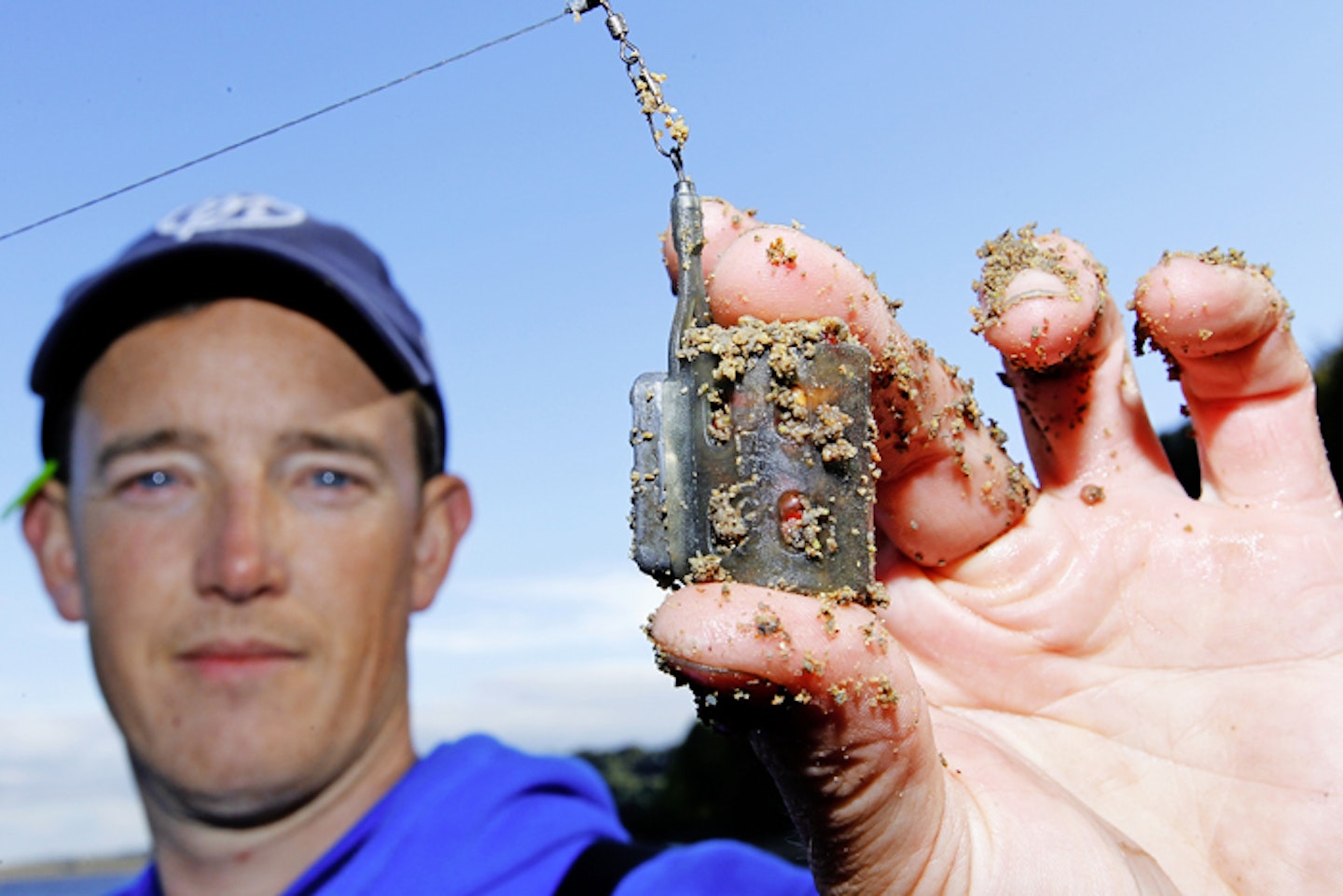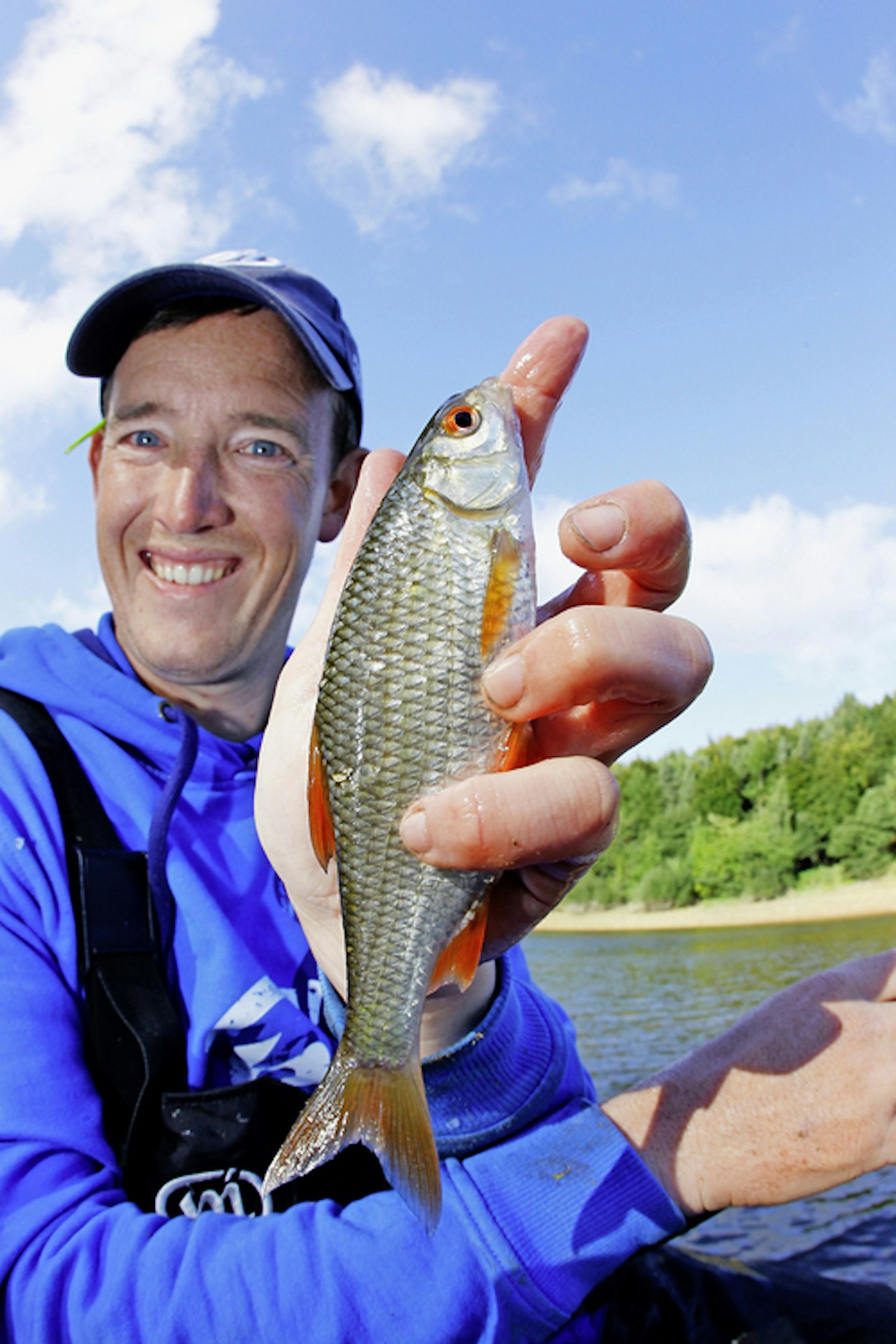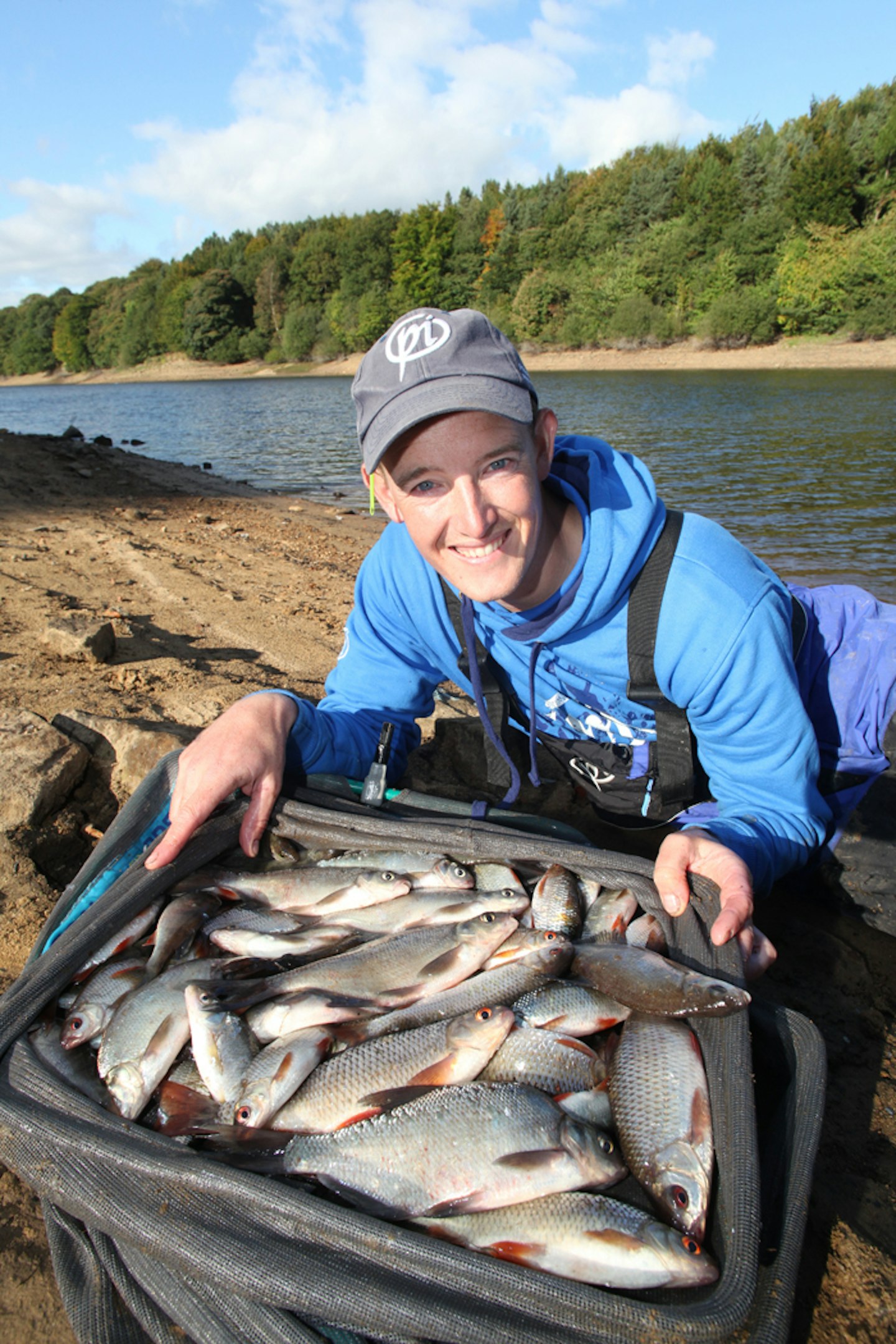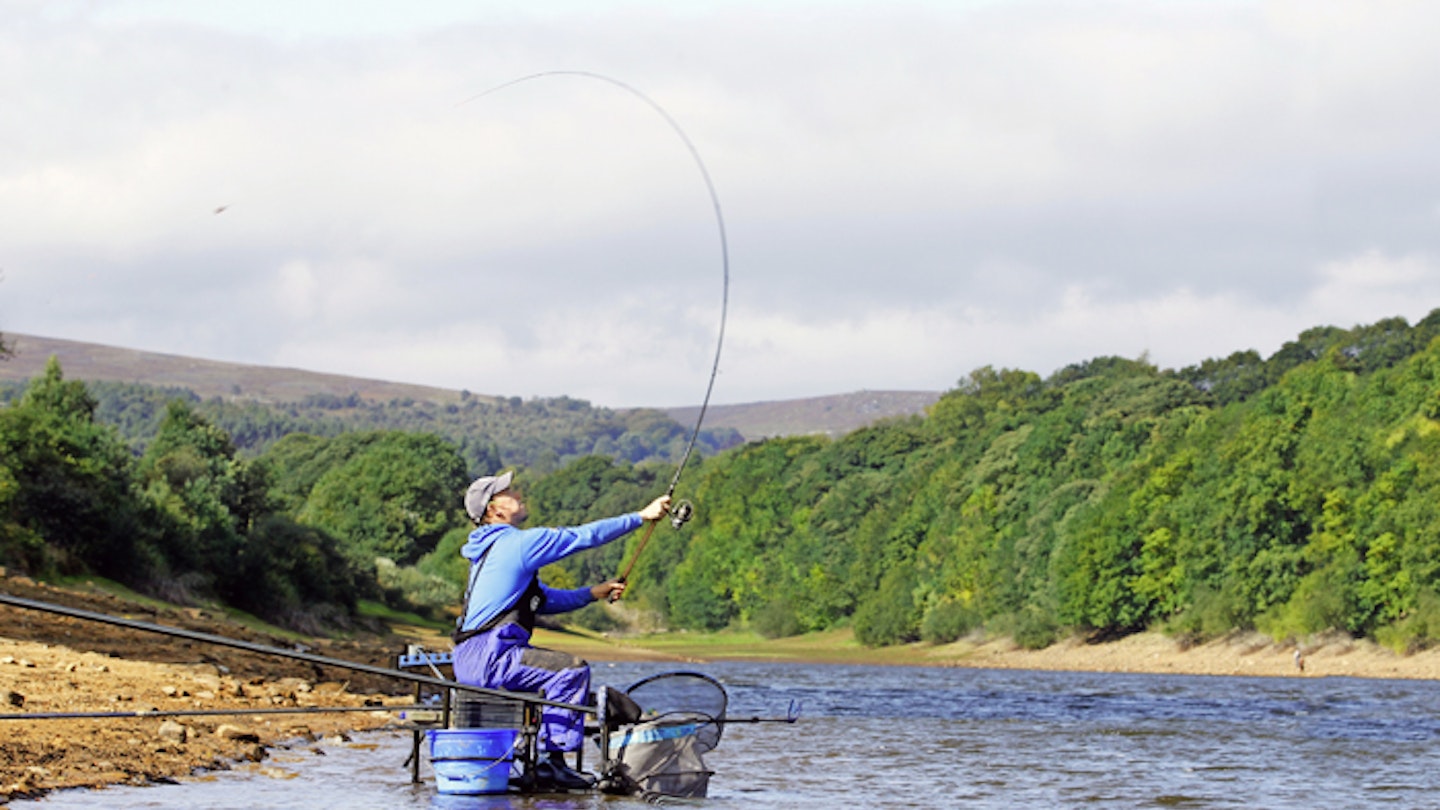Britain has dozens of big reservoirs brimming with angling surprises. Lee Kerry tests the water at one such venue using simple feeder and pole tactics.
We meet up with Lee Kerry at South Yorkshire’s Damflask Reservoir, where the England international puts together a big bag of prime silvers from the stunning day-ticket venue.
The UK is home to dozens of huge, untapped reservoirs where the fish – and the weather – run wild. Hundreds of acres in size, many of these places boast huge mixed stocks of coarse fish, housed in surroundings to die for. Unfortunately, too few anglers know of these venues, and even fewer dare to tread their banks with a rod in hand. That’s something England international angler Lee Kerry hopes to change.
A supremely versatile angler, Lee is perfectly at home knocking out 100lb of carp from commercials, but for him the challenge presented by expanses of water such as Yorkshire’s Damflask Reservoir far outweighs that of a venue full of stocked fish fed on a diet of pellets.
Up for the challenge
Flanked by mature woods and steep peaks, with a towering dam wall at one end and depths to a staggering 88ft, it’s hard to believe that Damflask sits just a few miles above the suburbs of vibrant Sheffield, home to over half a million people.
It was partially created during a major flood in 1864 which washed away the village of Damflask itself, before construction was officially completed in 1896. Interestingly, the reservoir was also used as a practice ground for one of the ‘Dambuster’ raids during the Second World War. And being so deep, naturally it’s home to many a fishing tale, with legend telling of pike to over 40lb, plus monstrous stillwater chub and vast shoals of skimmers and big bream.
“Sometimes you don’t have to go far to find a little piece of fishing heaven!” said Lee as he carted his tackle down the bank.
“Lots of towns have reservoirs like this one on their outskirts that are well worth investigating. It’s a journey into the unknown for me today as I’ve never been to Damflask before. I’ve heard tales of what has been caught down the years, and I find the mystery of it all very exciting. That said, it’s a feral water in many respects, and you have to work for your bites – you can’t just pot in some pellets and expect to get a fish instantly!” he joked.
Adapting to the conditions
The main body of Damflask is where the deeper water can be found, with depths of around 15ft-20ft just a few rodlengths out. Although this is okay for skimmers and bream, Lee decided to head for the slightly shallow water around two thirds of the way up the reservoir, where it started to narrow. Here he found a more manageable 6ft-8ft, ideal for one of his main targets today, roach. But what methods would he employ?
“How close the fish will come to the bank depends on the water temperature. From June to October you’ll catch on the pole, but in the colder months you might only catch on the feeder in the deeper water.
“The weather can also play a big part on venues like this. On flat calm days you might be able to fish the waggler, but it’s out of the question today because of the wind, so I’ve set up a few pole rigs for roach and a feeder rod for skimmer bream,” he added.

A pole and feeder attack gave Lee plenty of options.
Prospecting for silver
His plan of attack was simple, and one which is well-suited to any large reservoir. He planned to feed his pole line to begin with, and fish the feeder while it settled.
“Groundbait is a real must on a venue of this size. The noise the balls make on entering the water and the cloud it creates definitely attracts fish from a wide area and holds them there. I’ll cup or throw in around five large balls to start,” he said.
“It’s important to give the fish time to settle over the bait, so in the meantime I’ll cast out the feeder and look for a few skimmers. When you mention bream, some anglers think you need to put in a load of bait immediately but this isn’t the case. I prefer to build up a feeder line gradually, casting every few minutes with a small or medium-sized feeder.
“There’s no need to fish ultra-light tackle here because a lot of the fish won’t have been caught before – in that respect it’s a bit like fishing the huge Irish stillwaters.
On my feeder set-up I’m using a 2ft trace of 0.13mm (4lb) Reflo Powerline and a size 16 hook. Thick lines are stiffer and lead to fewer tangles, and bigger hooks mean more positive bites from bigger fish, rather than unhittable taps from tiny fish, which can happen with small hooks,” he said.
Lee started his session by fishing a small groundbait feeder, with small pieces of worm, or fluoro pinkies, on the hook. The opening 30 minutes were slow but, rather than put in a load of feed to try to draw in fish, Lee decided to go looking for them. Another 10 yards were added to his next cast to put him in much deeper water, about 50 yards from the bank. It didn’t take long for his quivertip to rattle and a firm strike saw a small skimmer bream being brought to the net, followed by several more.

A small groundbait feeder with worm or fluoro pinkies on the hook caught fish in deeper water.
Contending with the wind
Fishing such expansive, wild reservoirs presents certain challenges, principal among which is often the weather. With Damflask being quite high up, a brisk wind was howling down the length of the venue, funnelled by the surrounding hills. This forced Lee to really punch out his feeder slightly upwind, keeping his line tight as it landed to reduce the chances of a large bow forming in the line which would in turn hinder bite detection.
Another minor problem soon emerged in the form of the unwanted attention of Damflask’s pike stocks. While the lures and static deadbaits of several predator anglers fishing nearby remained untouched, a small skimmer splashing around on the surface after being hooked by Lee proved too much to resist and he was forced to reel it to the bank swiftly to prevent being bitten off!

Lee successfully fished the pole at 10 metres and the feeder at 40 yards.
Tweaking his tactics

Although catching fairly steadily, after a couple of hours Lee decided that a change of approach was required.
“I’m going to try my pole line, which I’ve been feeding regularly with casters via my catapult following the initial groundbait bombardment. It’s always worth assessing the weather conditions when deciding how far out to fish your pole line. For example, if you introduce your groundbait at 10 or 11 metres and then the wind gets up, you might not be able to hold your pole at that distance comfortably and fish over the loosefeed. If in doubt, go a section or two shorter so you don’t struggle,” he said.
With that Lee picked up his pole, on which he had already set up a rig with a 0.75g rugby ball-shaped float, quite a heavy pattern to use considering he only had around 6ft of water in front of him at 10m.
“This wind is gusting and there’s a bit of undertow as a result, so a heavier float is needed to prevent my rig being dragged all over the place,” he explained.
Lee matched his float with a 0.11mm mainline and a 0.09mm hooklink, tied to a size 18 hook baited with maggot. He didn’t have to wait long to see if his patient baiting with groundbait and casters had worked, as his float buried on the first put in, the culprit a plump, pristine roach.
This signalled the start of a good run of fish, all falling to maggot hookbaits, as Lee began to put together a tidy net in challenging conditions.
“It’s certainly nothing like the bag of fish you might expect at a heavily-stocked commercial, but it’s been 10 times as rewarding. Fish don’t give themselves up on these wild reservoirs and the weather can make it quite challenging at times, but get your tactics right and prime roach and skimmers are there for the taking!” he smiled.

Lee set up a number of large rugby ball-shaped pole rigs to combat strong winds and undertow.
Lee’s tackle options
FEEDER SET-UP
Rod: 11ft 8in Preston Dutch Master
Reel: Preston PXR Pro 4000
Mainline: 6lb Preston Powermax
Hooklink: 0.13mm (4lb) Preston Powerline
Hook: Size 16 PR344
Feeder: 30g small wire cage
Hookbait: Worms, pinkies
POLE SET-UP
Pole: 11m Preston Absolute XS pole
Elastic: “A solid No.4 Preston Slip is ideal for roach. Step up to a No.5 if skimmers and bream start to show.”
Mainline: 0.11mm Preston Powerline
Hooklink: 0.09mm Preston Powerline
Hook: Size 18 PR333
Float: Preston PB Silver 4 0.75g
Hookbait: Single or double maggot
How you can fish the venue
Damflask Reservoir is situated near Loxley, Sheffield (sat nav co-ordinates S6 6SQ), and is open all year round. It measures around 115 acres and, as well as roach, skimmers and bream, also holds tench, dace, pike, perch and chub (with fish of 7lb 13oz having been taken in the past). Day tickets cost £4.90 (£3.60 concessions). Pay at the machine on the south side near the house by the dam. For more information, contact the bailiff on 07952 485798.

A fine net of silvers for Lee on his first visit to Damflask.
